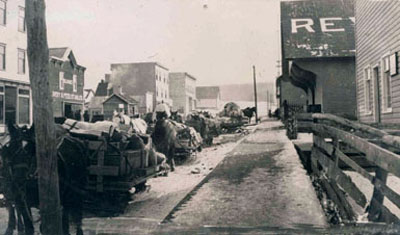Article
Val-des-Sources (Asbestos)
Val-des-Sources, Quebec, incorporated as a village in 1899 and as a town in 1937, population 7,088 (2021 census), 6,786 (2016 census). The town of Val-des-Sources is located in the Eastern Townships region, 53 km north of Sherbrooke and 58 km southeast of Drummondville. Originally called Asbestos, the town was named after the mineral mined there from 1881 to 2011. During that time, Asbestos produced much of the world’s supply of the asbestos mineral, which is now banned in many countries because of its negative health effects. Asbestos was renamed Val-des-Sources in December 2020. Val-des-Sources is located on ancestral Abenaki lands. The land is unceded and is considered Indigenous territory.







